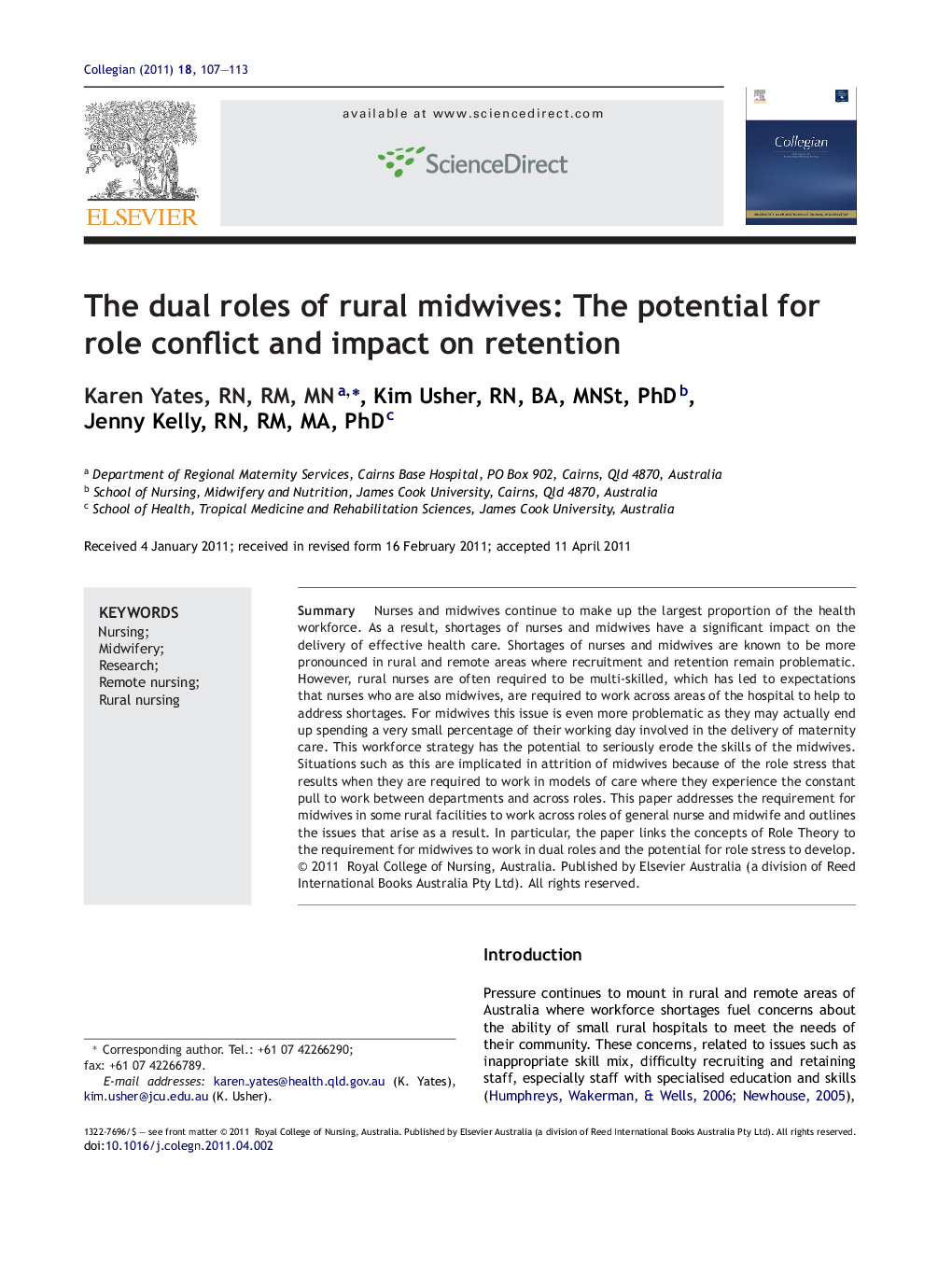| Article ID | Journal | Published Year | Pages | File Type |
|---|---|---|---|---|
| 2646289 | Collegian | 2011 | 7 Pages |
SummaryNurses and midwives continue to make up the largest proportion of the health workforce. As a result, shortages of nurses and midwives have a significant impact on the delivery of effective health care. Shortages of nurses and midwives are known to be more pronounced in rural and remote areas where recruitment and retention remain problematic. However, rural nurses are often required to be multi-skilled, which has led to expectations that nurses who are also midwives, are required to work across areas of the hospital to help to address shortages. For midwives this issue is even more problematic as they may actually end up spending a very small percentage of their working day involved in the delivery of maternity care. This workforce strategy has the potential to seriously erode the skills of the midwives. Situations such as this are implicated in attrition of midwives because of the role stress that results when they are required to work in models of care where they experience the constant pull to work between departments and across roles. This paper addresses the requirement for midwives in some rural facilities to work across roles of general nurse and midwife and outlines the issues that arise as a result. In particular, the paper links the concepts of Role Theory to the requirement for midwives to work in dual roles and the potential for role stress to develop.
